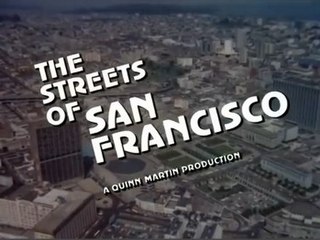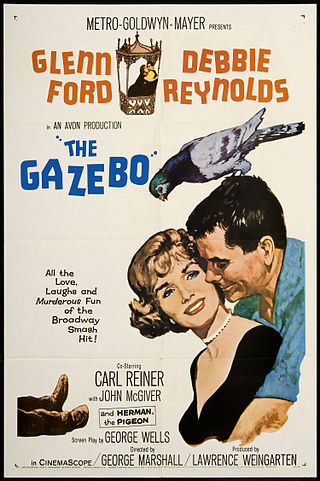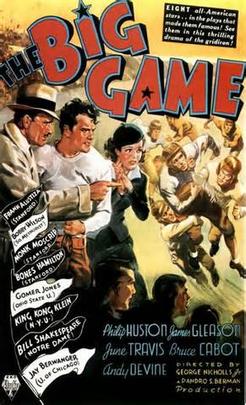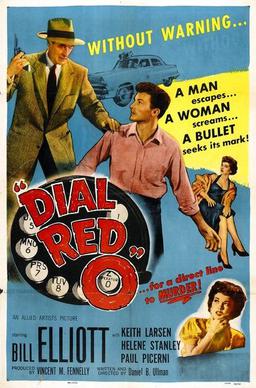
Norman Frederick Jewison was a Canadian filmmaker. He was known for directing films which addressed topical social and political issues, often making controversial or complicated subjects accessible to mainstream audiences. Among numerous other accolades, he was nominated for the Academy Award for Best Director three times in three separate decades, for In the Heat of the Night (1967), Fiddler on the Roof (1971), and Moonstruck (1987). He was nominated for an additional four Oscars, three Golden Globe Awards, and a Primetime Emmy Award, and won a BAFTA Award. He received the Academy of Motion Pictures Arts and Sciences's Irving G. Thalberg Memorial Award in 1999.

The Streets of San Francisco is an American television crime drama filmed on location in San Francisco and produced by Quinn Martin Productions, with the first season produced in association with Warner Bros. Television.

Wendell Reid Corey was an American stage, film, and television actor.

Queen of Outer Space is a 1958 American science fiction film shot in DeLuxe Color and CinemaScope. Produced by Ben Schwalb and directed by Edward Bernds, it stars Zsa Zsa Gabor, Eric Fleming, and Laurie Mitchell. The screenplay by Charles Beaumont, about a revolt against a cruel Venusian queen, is based on an idea supplied by Ben Hecht and originally titled Queen of the Universe. Upon its release, the film was promoted by Allied Artists and distributed to some locations as a double feature with Frankenstein 1970 starring Boris Karloff.

Don Haggerty was an American actor of film and television.
The 29th Academy Awards were held on March 27, 1957, to honor the films of 1956.

Thomas George Hooper is a British-Australian film director.

The Gazebo is a 1959 American black comedy CinemaScope film about a married couple who are being blackmailed. It was based on the 1958 play of the same name by Alec Coppel and directed by George Marshall. Helen Rose was nominated for the Academy Award for Best Costume Design, Black-and-White. According to MGM financial records, the film earned $1,860,000 in North America and $1,450,000 elsewhere, making a profit of $628,000. It is also the last film released by MGM in the 1950s.

Sudden Danger is a 1955 American film noir crime drama directed by Hubert Cornfield and starring Bill Elliott, Beverly Garland, and Tom Drake.

The Crime Doctor is a 1934 American crime drama directed by John Robertson from a screenplay by Jane Murfin, adapted from the novel The Big Bow Mystery by Israel Zangwill. The film stars Otto Kruger, Karen Morley, and Nils Asther. RKO Radio Pictures produced and distributed the film which was released on April 27, 1934.

The Big Game is a 1936 American sports drama film directed by George Nicholls, Jr. and produced by RKO Radio Pictures, which released the film on October 9, 1936. The screenplay was written by Irwin Shaw, adapted from the 1936 novel of the same name by Francis Wallace. The film stars Philip Huston, James Gleason, June Travis, Bruce Cabot and Andy Devine. Huston (1908–1980) was a respected New York stage actor, who also had prominent roles in a number of motion pictures and, later, acted in television productions, as well.

Flaming Frontier is a 1958 Canadian-American Western film produced and directed by Sam Newfield in his final credited feature film, from a screenplay by Louis Stevens. Produced by Regal Pictures in Canada, where Newfield was shooting his Hawkeye and the Last of the Mohicans TV series, it was distributed by 20th Century Fox and opened in August 1958. The film stars Bruce Bennett and Jim Davis.
$20 a Week is a 1935 American melodrama film directed by Wesley Ford and starring James Murray, Pauline Starke, and Gwen Lee. It was released on February 2, 1935.

Black Diamonds is a 1940 American drama film directed by Christy Cabanne and starring Richard Arlen, Andy Devine, and Kathryn Adams. The film was released on July 19, 1940.

The Devil's Pipeline is a 1940 American drama film directed by Christy Cabanne. It stars Richard Arlen, Andy Devine, and John Eldredge, and was released on November 1, 1940.

Back Trail is a 1948 American Western film, directed by Christy Cabanne. It stars Johnny Mack Brown, Raymond Hatton, and Mildred Coles, and was released on July 18, 1948.

Burning Up Broadway is a 1928 American silent drama film, directed by Phil Rosen. It stars Helene Costello, Robert Frazer, and Sam Hardy, and was released February 1928.

Dial Red O is a 1955 American film noir crime film directed by Daniel B. Ullman and starring Bill Elliott, Helene Stanley and Keith Larsen. It was the first in a series of five Los Angeles-set police thrillers that Elliott made for Allied Artists at the end of his career.

Chain of Evidence is a 1957 American film noir crime film directed by Paul Landres and starring Bill Elliott, Jimmy Lydon and Don Haggerty. It was the fourth in a series of five films featuring Elliott as a detective in the Los Angeles County Sheriff's Office made by Allied Artists.

Footsteps in the Night is a 1957 American film noir crime film directed by Jean Yarbrough and starring Bill Elliott, Don Haggerty and Eleanore Tanin. It was the last in a series of five films made by Allied Artists featuring Elliott as a police detective.


















